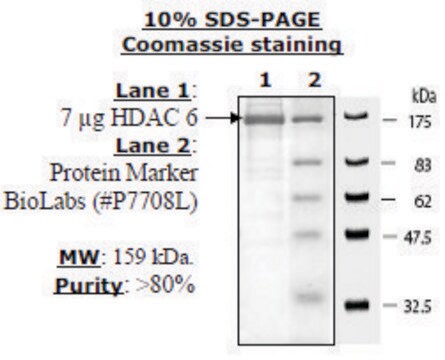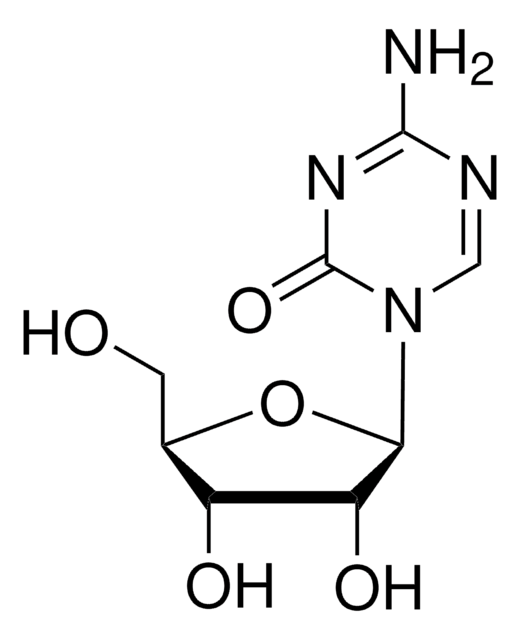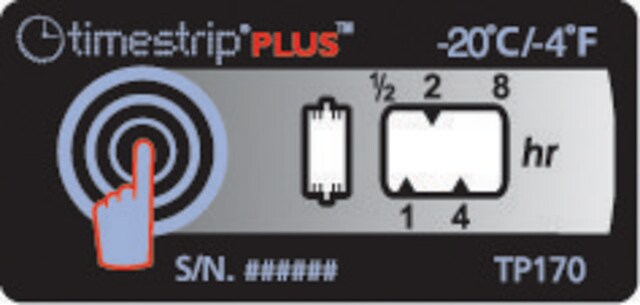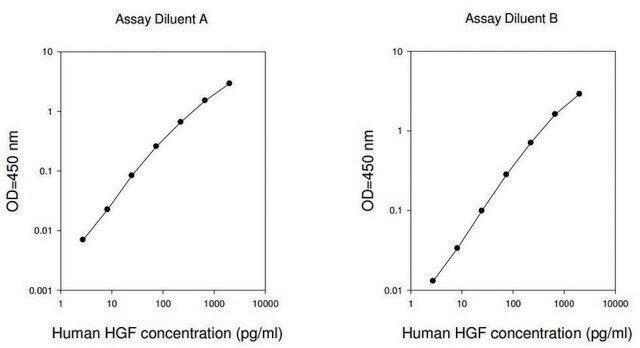SRP3300
HGF mouse
recombinant, expressed in Hi-5 Insect cells, ≥95% (SDS-PAGE), ≥95% (HPLC)
Sinonimo/i:
Hepatopoietin (HPTA), Scatter Factor (SF)
Autenticatiper visualizzare i prezzi riservati alla tua organizzazione & contrattuali
About This Item
Codice UNSPSC:
12352202
NACRES:
NA.32
Prodotti consigliati
Origine biologica
mouse
Ricombinante
expressed in Hi-5 Insect cells
Saggio
≥95% (HPLC)
≥95% (SDS-PAGE)
Stato
lyophilized
Potenza
10-20 ng/mL
PM
80.0 kDa
Confezionamento
pkg of 20 μg
Impurezze
<0.1 EU/μg endotoxin, tested
Colore
white to off-white
N° accesso UniProt
Condizioni di spedizione
wet ice
Temperatura di conservazione
−20°C
Informazioni sul gene
mouse ... HGF(15234)
Descrizione generale
Hepatocyte growth factor (HGF) is a plasmin related disulfide-linked, hetereodimeric protein containing an α and a β chain. It is synthesized as inactive, single-chain precursor which shares similarity with plasminogen. Its α chain contains an N-terminal hairpin and four kringle domains (NK4).
Azioni biochim/fisiol
Hepatocyte growth factor (HGF) functions via its receptor c-Met, which gets activated upon tyrosine phosphorylation, and subsequently promotes epithelial cell proliferation, morphogenesis, angiogenesis and motility. It plays a crucial role in organ development, as inactivation of either this gene or its receptor in fetal stages results in organ hypoplasia. Endogenously this protein is involved in the self-repair of various ograns including injured livers, kidneys, lungs etc. HGF is a predominant potent factor involved in lung growth and repair. It functions as a motogen, tubulogen and anti-apoptotic agent on airway epithelial and other cells expressing HGF receptor c-Met. Studies in mice show that HGF determines the severity of Pseudomonas aeruginosa keratitis by enhanced HGF signaling through c-met resulting in elevated pro-inflammatory cytokines and reduced anti-inflammatory cytokines.
Stato fisico
Lyophilized from 10 mM Tris, pH 7.2 + 100mM L-Arginine + 200 mM NaCl.
Ricostituzione
Centrifuge the vial prior to opening. Reconstitute in water to a concentration of 0.1-1.0 mg/mL. Note: Slow to dissolve. Do not vortex. This solution can be stored at 2-8°C for up to 1 week. For extended storage, it is recommended to further dilute in a buffer containing a carrier protein (example 0.1% BSA) and store in working aliquots at -20°C to -80°C.
Codice della classe di stoccaggio
10 - Combustible liquids
Classe di pericolosità dell'acqua (WGK)
WGK 3
Punto d’infiammabilità (°F)
Not applicable
Punto d’infiammabilità (°C)
Not applicable
Scegli una delle versioni più recenti:
Possiedi già questo prodotto?
I documenti relativi ai prodotti acquistati recentemente sono disponibili nell’Archivio dei documenti.
I clienti hanno visto anche
HGF signaling impacts severity of Pseudomonas aeruginosa keratitis.
Jiang X et al
Investigative Ophthalmology & Visual Science, 55(4), 2180-2190 (2014)
Regulation of hepatocyte growth factor in mice with pneumonia by peptidases and trans-alveolar flux.
Raymond WW et al
PLoS ONE, 10(5), e0125797-e0125797 (2015)
L Naldini et al.
The EMBO journal, 10(10), 2867-2878 (1991-10-01)
Scatter Factor (SF) is a fibroblast-secreted protein which promotes motility and matrix invasion of epithelial cells. Hepatocyte Growth Factor (HGF) is a powerful mitogen for hepatocytes and other epithelial tissues. SF and HGF, purified according to their respective biological activities
Kaisa L Hanley et al.
Molecular cancer research : MCR, 20(3), 337-349 (2021-11-24)
The Ras/Erk and NF-κB pathways play critical roles in cell proliferation and are known to drive oncogenesis when overactivated. Herein we report a gatekeeper function of the two pathways by working in synergy to suppress liver tumorigenesis. Hepatocyte-specific deletion of
Jian-Ya Zhou et al.
Cancer letters, 351(2), 265-271 (2014-07-02)
In non-small-cell lung cancer (NSCLC) that harbours an activating epidermal growth factor receptor (EGFR) mutation, over-expression of hepatocyte growth factor (HGF) is an important mechanism involved in the acquired resistance to EGFR-tyrosine kinase inhibitors (TKIs) by restoring activity of the
Il team dei nostri ricercatori vanta grande esperienza in tutte le aree della ricerca quali Life Science, scienza dei materiali, sintesi chimica, cromatografia, discipline analitiche, ecc..
Contatta l'Assistenza Tecnica.










